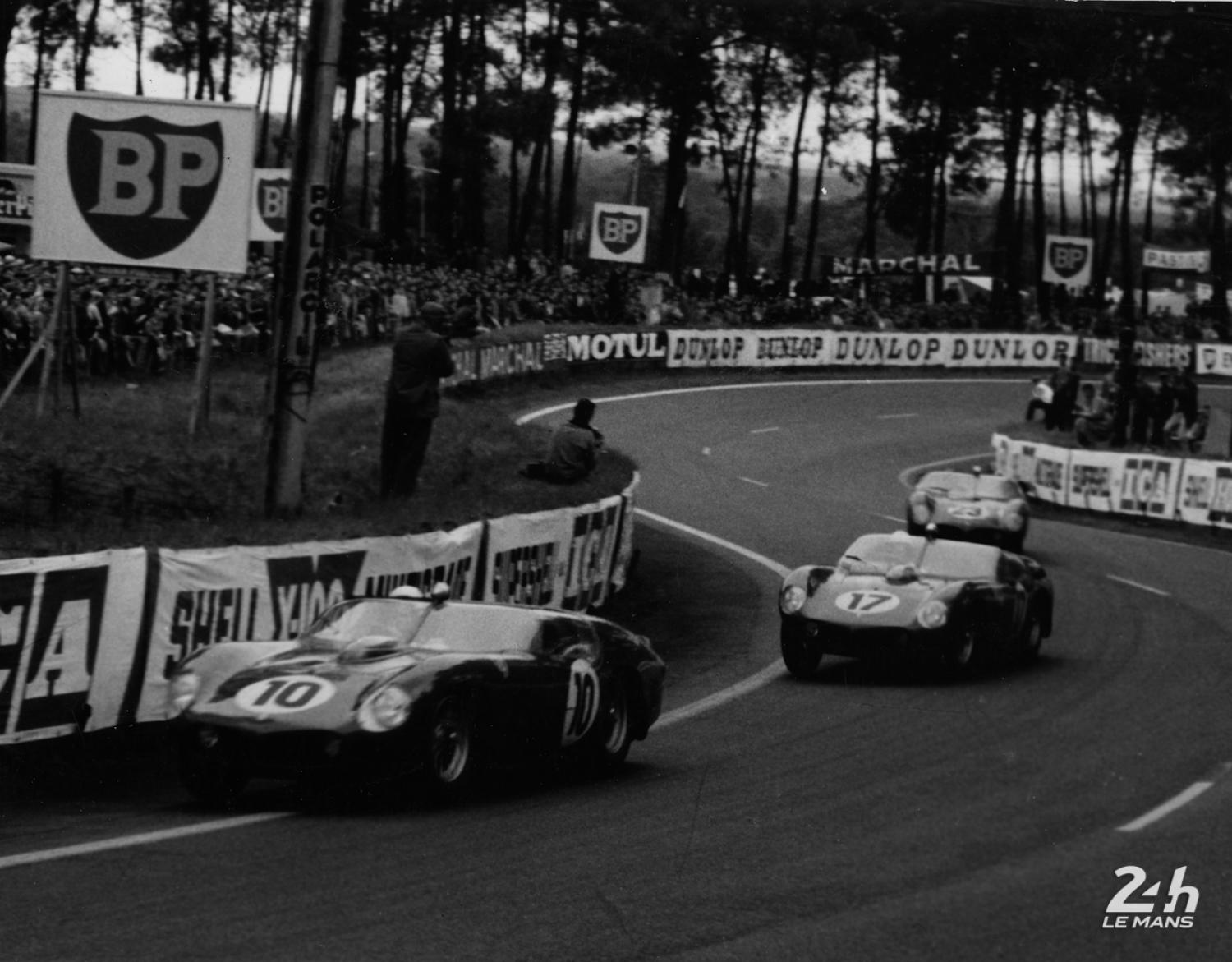Through their parallel activities as importers and team owners, Italian-American Luigi Chinetti, Belgian Jacques Swaters and the Brit Ronnie Hoare have all contributed to Ferrari's glory at the 24 Hours of Le Mans and to the marque's commercial development on the road.
Luigi Chinetti, the predecessor – A three-time winner as a driver (1932-34-49), Luigi Chinetti is also the man who convinced Enzo Ferrari of the importance of the American market, especially customised GTs that today are worth their weight in gold at auction. He also became a team owner of North American Racing Team (NART), often in the lead pack at the 24 Hours between 1960 and 1965. In 1960, Chinetti's team finished second (Ricardo Rodriguez-André Pilette), fifth (George Arents-Alan Connell, Jr.) and seventh (Ed Hugus-Augie Pabst). In 1963, Pedro Rodríguez scored the first pole position in the history of the 24 Hours, at the wheel of a NART Ferrari. Two years later, Masten Gregory and Jochen Rindt claimed the top step on the podium, and Rodríguez and Nino Vaccarella finished seventh. Chinetti's place in the Le Mans hall of fame is unique in two respects: after securing the first win ever for an Italian constructor (Alfa Romeo), as a driver he gave Ferrari its first victory in 1949, then its last to date in 1965 as a team owner.
Jacques Swaters, another yellow for Ferrari – Yellow is doubly significant in auto racing and at the 24 Hours of Le Mans: it is the colour of the city of Modena, homeland of Enzo Ferrari, and also Belgium, at a time when a single colour on a racing car identified the country prior to sponsorship. This yellow was sported by the cars of Jacques Swaters (after his noteworthy career as a driver) from Belgium thanks to his Garage Francorchamps, the first Ferrari importer based on the European continent. From 1960 to 1965, Swaters' yellow Ferraris were frequently in the top 10 and even on the podium, with a string of impressive results. After finishing third in 1962, second in 1963 then fifth in 1964, Swaters nearly clinched the win in 1965. While battling with the Ferrari 250 LM of future winners Gregory-Rindt (NART), that of Pierre Dumay-Gustave Gosselin fell from the lead after losing its right rear tyre late Sunday morning. In the end, the car finished second ahead of another Belgian Ferrari, the 275 GTB of Willy Mairesse-Jean Blaton. Until his death in 2010, Jacques Swaters was one of the most revered guardians of Ferrari's legacy, even called upon during the creation of Ferrari Classiche, the department dedicated to the restoration and official certification of vintage Ferrari's.
Maranello Concessionaires, Ferrari "British style" – By becoming the Ferrari importer in the U.K., Ronnie Hoare was also a pioneer in the Italian marque's development. In 1958, he bought an 250 GT from Mike Hawthorn, a Ferrari driver in Formula 1 and previous 24 Hours winner (in 1955 with Jaguar), who had always ambitioned to import the Italian cars after his retirement as a driver. Sadly, he passed away prematurely in a road accident in 1959. Hoare decided to pick up the mantle and in July 1960 founded Maranello Concessionaires. His subsequent involvement in competition led Hoare to join NART and Ecurie Francorchamps as a Ferrari VIP partner at the 24 Hours. In 1963, the team's first participation ended in a fifth place finish for the 330 LMB of Jack Sears-Mike Salmon. The next year, Hoare's Ferraris first adopted their distinctive red with a sky blue stripe liveries, and secured the team's best result at Le Mans, with Jo Bonnier-Graham Hill (second) and Innes Ireland-Tony Maggs (sixth). After a double retirement in 1965, the other Maranello Concessionaires highlight at the 24 Hours was a class win for the 275 GTB/C of Piers Courage-Roy Pike, the first ranked Ferrari (eighth overall) in 1966.
Three importers, three team owners, three anecdotes – Two generations of Chinettis have participated in the 24 Hours. In addition to Luigi, Sr.'s wins as a driver and a team owner, his son Luigi, Jr. a.k.a. "Coco" took the start three times. His best result was fifth place in 1971 in his rookie appearance at the wheel of a Ferrari 365 GTB4 shared with Bob Grossman. In 1970, Jacques Swaters was in charge of the Ferrari 512s used in the filming of Steve McQueen's Le Mans after Enzo Ferrari refused to contribute to the production of a film that gave the victory to a Porsche 917! In the world of motorsport and to diehard Ferrari fans, Ronnie Hoare was known as "Colonel" in reference to his time in the British army, particularly during World War II.
PHOTOS: LE MANS (SARTHE, FRANCE), CIRCUIT DES 24 HEURES, 24 HOURS OF LE MANS. From top to bottom, fielded by the NART, in 1961 the Ferrari of Pedro and Ricardo Rodríguez (#17) was the toughest rival of future winners Olivier Gendebien and Phil Hill (#10). In 1965, the 250 LM of Pierre Dumay-Gustave Gosselin (#26 Ecurie Francorchamps) sported on its rear spoiler evidence of the escape that probably caused it the win. In 1963, the British team Maranello Concessionaires finished its first 24 Hours if fifth place with the #12 330 LMB of Jack Sears-Mike Salmon.



